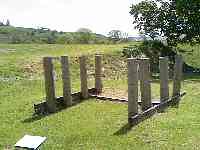Zoe Williams today is doing the usual “provocative columnist” thing in The Guardian, being sarky about Eve Ensler, The Vagina Monologues, and Ensler’s new anti-violence effort centred on New York.
I can’t disagree that from more sophisticated cultures than American, The Vagina Monologues is rather lame and embarrassing – that if you don’t have a hang-up about the word the show is distinctly thin, and some of the portrayal of other cultures is less than understanding. Still, for the audience for which it was originally written, and for many others around the world, it works.
Ditto with the anti-violence initiative. No, New York may be far from the worst place in the world for violence against women, but everywhere can benefit from such initiatives.
Just to put that in perspective, a horrific story about the murder of a nine-year-old girl who, it is thought, was trying to save her mother from a violent partner.
Mollie was found with blood and vomit surrounding her head. Her mother was discovered near by, moving and moaning, and attempting to get up. Both had serious head injuries. A claw hammer was lying on top of the bed.
Mollie died the next day. A post-mortem examination showed that she had at least two blunt impact injuries to her head and face, causing skull fractures and brain damage.
It is the kind of violence that, had the mother (who reading between the lines is from a poor socio-economic background) been killed would never have even made The Times. A classic case: a history of violence, previous threats to kill … and anything that can publicise these risks for women (and children) and help them get out of such circumstances should be applauded, no matter how gauche it might look to the sophisticated.




 About
About